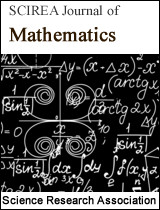Block random models in biological sciences
DOI: 201 Downloads 14628 Views
Author(s)
Abstract
A block random model, studied earlier in economics is introduced for biological sciences. Two approaches which handle participants as species and participants as individuals give pictures on processes from different points of view. In ecology it can provide an opportunity for some intervention to avoid development of dangerous conditions. For epidemiological applications a sample problem is presented to illustrate that epidemics spread curve is usually U-shaped or even multiple U-shaped. This is not because of human indiscipline but it is rather a consequence of randomness appearing in the processes.
Keywords
Random matrices, Eigenvalues, Lyapunov stability, Biology, Ecology, Epidemiology
Cite this paper
Ferenc Juhász,
Block random models in biological sciences
, SCIREA Journal of Mathematics.
Volume 5, Issue 5, October 2020 | PP. 61-71.
References
| [ 1 ] | Juhász, F.: The May-Wigner theorem for block random matrices, MTA SZTAKI, GMP-5a, 1994. |
| [ 2 ] | Juhász, F.: Crisis cycles in slightly unstable block random model, Journal of Statistical Computation and Simulation, vol. 86, pp. 3270-3286, 2016. |
| [ 3 ] | Juhász, F.: Structural cycles in slightly unstable block random model, Journal of Statistics & Management Systems, 2020. |
| [ 4 ] | May, R. M.: Will a large complex system be stable? Nature, vol. 238, pp. 413-414, 1972. |

